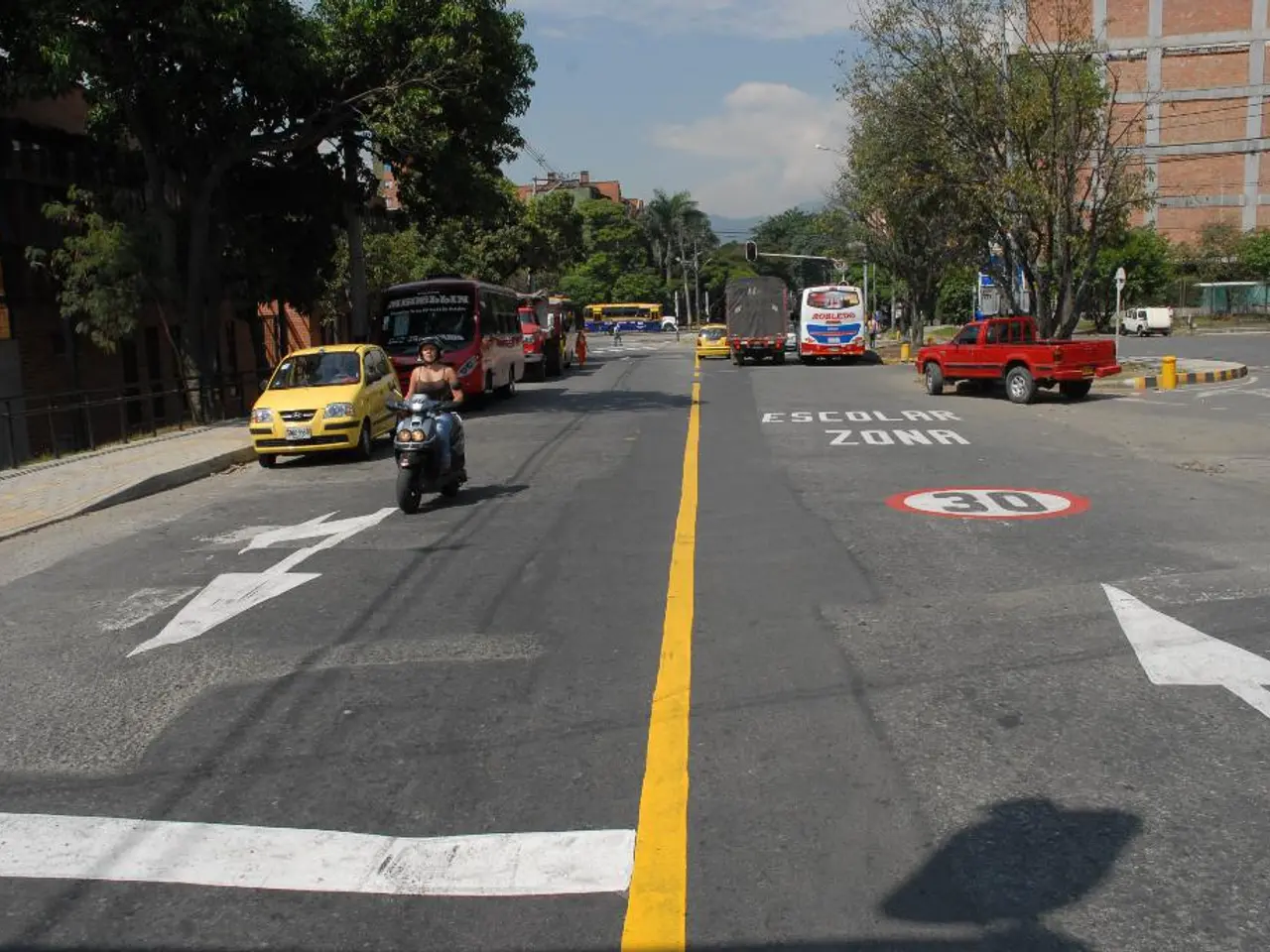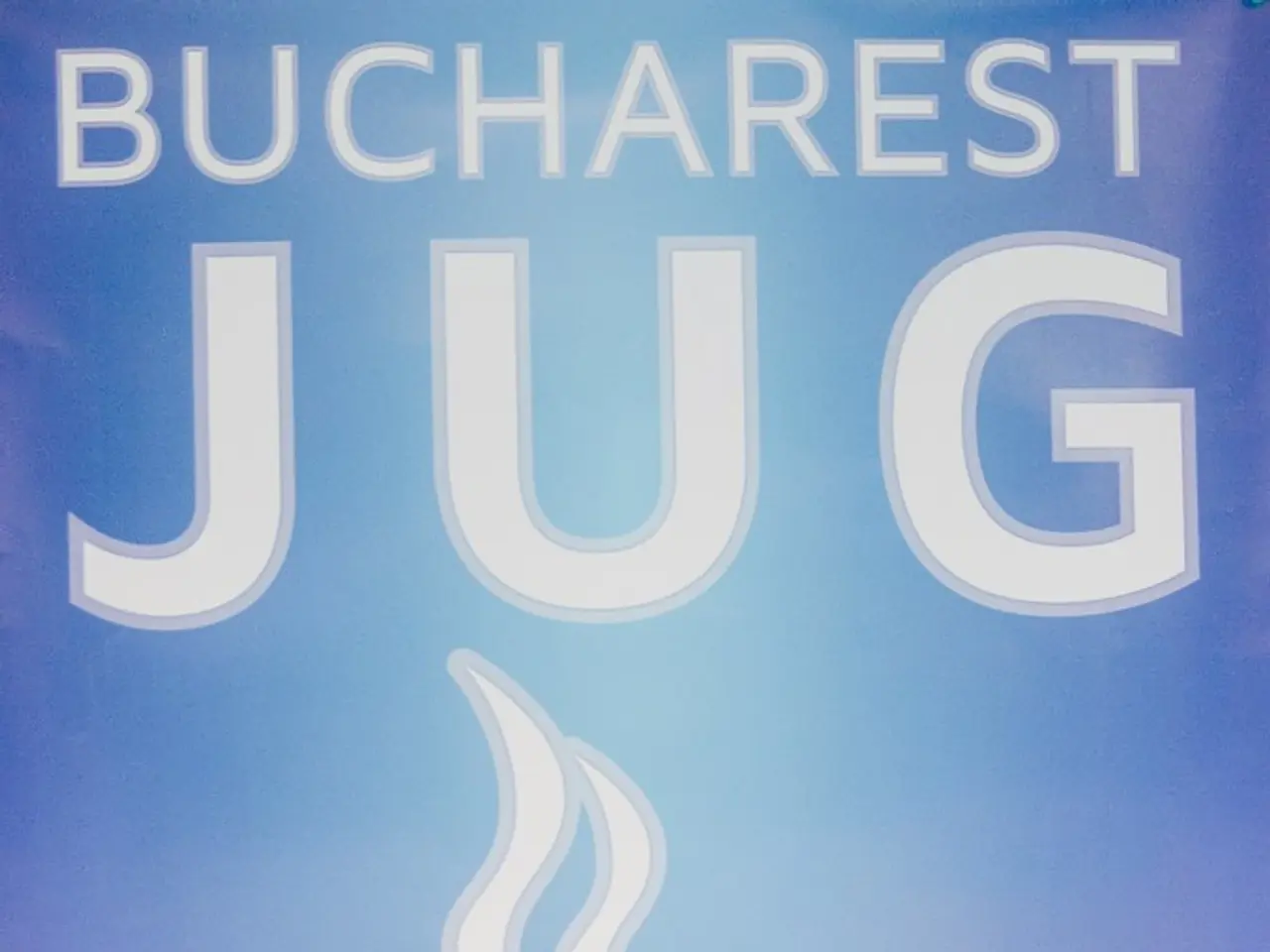NYC Ready to Eliminate 300,000 Parking Spots in City Council's Effort to Enhance Street Safety
New York City's Universal Daylighting Bill: A Step Towards Improved Pedestrian Safety or an Expensive Parking Ticket?
New York City's Intro. 1138, also known as the Universal Daylighting bill, proposes a significant change in street design by banning parking within 20 feet of intersections and crosswalks [1][2][5]. The bill, sponsored by Queens Council Member Julie Won, aims to reduce fatal traffic crashes by addressing the issue of vehicles blocking sightlines for pedestrians and drivers [1][3].
Pros of Intro. 1138
The bill's primary objective is to enhance street safety by improving visibility at intersections, where over 50% of casualties and injuries occur in NYC [1][3]. Supporters argue that this measure could significantly reduce fatal traffic crashes and establish a lasting safety legacy by prioritizing pedestrian lives over parking availability [3].
The legislation has garnered broad political support, with backing from the NYC Council Progressive Caucus and several advocacy groups [2][3]. Sara Lind, executive director of Open Plans, supports Intro. 1138, stating that the bill could help reduce the number of casualties and injuries at intersections in NYC [3].
Cons of Intro. 1138
Despite its potential benefits, Intro. 1138 faces criticism due to its extensive impact on parking availability and financial costs. The bill is projected to eliminate around 300,000 parking spaces citywide, which is a major concern in a city that already struggles with limited parking [1].
Some lawmakers, especially from car-dependent districts like Staten Island, criticize the bill as a “one size fits all” approach that may worsen conditions for drivers who rely on parking [1]. There are also concerns about the bill’s estimated $3 billion cost for implementation, which opponents consider an expensive “parking ticket” on residents [1].
The NYC Department of Transportation (DOT) has expressed reservations and favored a targeted rather than universal approach, which some advocates find insufficient [3]. The DOT's position is based on a January study that found daylighting offers only a modest improvement in traffic safety [4].
In conclusion, Intro. 1138 seeks to improve pedestrian safety by prohibiting parking near crosswalks, but it faces opposition due to its extensive impact on parking availability and financial costs. The debate continues as to whether a universal or selective approach is preferable [1][3].
[1] The New York Times. (2023, March 15). New York City Council Prepares to Vote on Street Design Bill. Retrieved from https://www.nytimes.com/2023/03/15/nyregion/new-york-city-council-street-design-bill.html
[2] Gothamist. (2023, March 16). NYC Council Moves Forward on Bill to Ban Parking Near Intersections. Retrieved from https://gothamist.com/news/nyc-council-moves-forward-on-bill-to-ban-parking-near-intersections
[3] Streetsblog NYC. (2023, March 17). The Pros and Cons of New York City's Universal Daylighting Bill. Retrieved from https://streetsblog.org/nyc/2023/03/17/the-pros-and-cons-of-new-york-citys-universal-daylighting-bill/
[4] DOT New York City. (2023, January). Daylighting Study. Retrieved from https://www1.nyc.gov/assets/dot/downloads/pdf/about/reports/daylighting-study.pdf
[5] NYC Council. (2023, February). Intro. 1138 - A Local Law to Amend the New York City Administrative Code, in relation to prohibiting parking within twenty feet of crosswalks. Retrieved from https://legistar.council.nyc.gov/LegislationDetail.aspx?ID=4375691&GUID=A430A8B9-90F6-4E18-9312-C740CAD2A86C&Options=ID%7CText%7C&Search=Intro.%201138
- The proposal of New York City's Universal Daylighting bill, aimed at enhancing street safety, has raised concerns within the finance sector about its potential $3 billion cost for implementation.
- In the broader context of urban development, the implementation of the Universal Daylighting bill could impact various industries such as transportation, as it focuses on improving visibility at intersections to decrease traffic accidents and may alter parking arrangements citywide.




